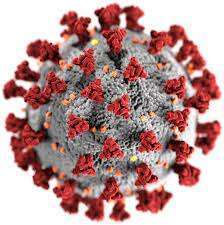Meet Kappa And Lambda, The Newest Sars-CoV-2 Variants That Experts Are Tracking Closely

Beta has followed Alpha and they were joined by Gamma and Delta, too, as WHO-designated Variants of Concern (VoC) of the novel coronavirus. While the world is warily tracking the spread of the Delta variant, or B.1.617.2, which was first identified in India in October last year, India itself is worried about Delta-plus. But the march of variants seemingly continues unabated and experts have in recent days said an eye must be kept on the Kappa and Lambda variants, too, both of which have been labelled as Variants of Interest (VoI) by WHO.
WHAT IS KAPPA?
It is a variant that is linked to the B.1.617 lineage of mutations that has also given rise to the Delta variant. B.1.617 has been found to carry more than a dozen mutations of which two stand out: E484Q and L452R, which is why this variant has also been called the “double mutant”.
But as it evolved, the B.1.617 branched out into new lineages. One of those, B.1.617.2 is called Delta and is the most prevalent variant at present in India. The other lineage, B.1.617.1, is called Kappa and it was designated as a VoI by the World Health Organisation (WHO) in April this year. But the Kappa itself also contains a sub-lineage, B.1.617.3 which, though not designated separately, is being tracked, too.
According to WHO, a VoI is one that “has been identified to cause community transmission/multiple Covid-19 cases/clusters, or has been detected in multiple countries”.
Kappa was first detected in India and more than 3,500 of the close to 30,000 cumulative samples submitted by the country to the GISAID initiative, which maintains a global database of novel coronavirus genomes, are of this variant. In the last 60 days, the Kappa variant has made up 3 per cent of all samples submitted by India. India, in fact, leads the GISAID table for Kappa submissions and is followed by the UK, US, Canada, etc.
WHAT IS LAMBDA?
The C.37 variant, better known as Lambda, its name as per the WHO designations based on the letters of the Greek alphabet, is the newest VoI identified by the UN health agency. It was first identified in Peru in December last year and has so far been detected in samples from about 26 countries shared with GISAID. The highest number of samples submitted is from Chile followed by the US. Peru is third on the list.
However, no samples so far from India have been of the Lambda variant.
The Lambda variant belongs to the B.1.1.1 lineage, which has been identified in as many as 29 countries, including in North and South America, Europe and Oceania. WHO has said that this variant has multiple mutations in the spike protein, which could have implications for how easily the virus spreads between people.
Health officials in the UK have said that Lambda is linked with symptoms that are common with most other variants of the novel coronavirus and that there is currently no evidence that it causes more severe disease or renders vaccines less effective.
DELTA STILL THE MOST PREVALENT IN INDIA
According to a database maintained by outbreak.info, of the total four WHO designated VoCs, three have been detected in samples isolated in India. The most prevalent one is the Delta, or B.1.617.2, variant, which accounted for 31 per cent of all samples shared by the country with GISAID. The second-most prevalent is Kappa, making up 16 per cent of the samples submitted. It is followed by the Alpha variant, with 13 per cent of total samples linked to this variant.
The Beta variant, which was first identfied in South Africa in May last year, accounts for just 1 per cent of the samples from India while Gamma, the fourth and last WHO-designated VoC, is yet to be detected in India.
TAGGED :



